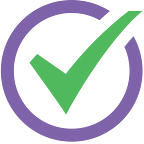The Anatomy of a Data Structures and Algorithms Interview
Data structures and algorithms (DS&A) interviews have become the standard coding interview for many different types of software engineers hoping to land their dream job.
DS&A interviews last around 30 minutes on Pramp and 30–45 minutes in live technical phone interviews.
Data structures are different methods of storing and organizing data serving a variety of needs, while algorithms are a prescription of step-by-step operations to be performed. A number of algorithms are included in common tasks such as sorting a set of unordered items. Certain algorithms are used in different situations: some algorithms are significantly faster, while others use less memory, are easier to implement, or get used based on assumptions about the dataset.
There are a number of common data structures and algorithms that come up in DS&A interviews, including, but not limited to: lists, arrays, stacks, trees, sorting and searching, priority queues, pattern matching, hashing, and more. For a list of the top ten classes of algorithms, see here.
Being a good developer plays a surprisingly small role in succeeding in programming interviews. You may wonder then why so many companies rely on DS&A interviews. Here are a few reasons:
Strong Filter
While DS&A interviews certainly lead to some false negatives, there are two types of candidates who tend to excel in coding interviews: those who are excellent problem solvers and those who prepare extensively. The former can be considered a very smart candidate who brings sharp problem-solving skills to tackle your company’s challenges, while the latter will use their perseverance to get whatever task they are assigned done. Given that many companies search for intelligence and drive, DS&A can serve as a proxy for evaluating these qualities.
Indication of Skill
Most companies need people who can work on any tech stack or cutting-edge problem, so they need an objective way to determine a candidate’s general skill set. Coding interviews provide a proxy for determining a candidate’s ability to tackle new problems.
Concrete Signals
Domain-specific interviews often give mixed signals as it’s difficult to judge a candidate based on his or her knowledge of a given topic. By contrast, coding interviews, which often have one or only a couple good answers, offer more concrete signals on the candidate’s problem-solving, coding, and communication skills.
Test of Communication Skills
While DS&A interviews aren’t representative of most daily tasks, it can serve as a proxy for the candidate’s ability to communicate with fellow team members. For example, the candidate will have to lead the interviewer from an idea to a working implementation, discuss tradeoffs, and analyze different approaches in real-time.
Independent of Seniority
The final benefit of DS&A interviews is that a single question can be tailored to candidates of varying levels of experience.
Interviewing is a skill of its own: even the best engineers struggle to pass coding interviews. For many, the biggest challenge isn’t the coding question, but rather staying focused while solving a problem out loud and under time pressure in front of an interviewer.
Mock interviews are an essential tool for preparing for the pressures of a live interview. From analyzing more than 100,000 interviews on Pramp, we’ve witnessed dramatic improvements in performance from a user’s first mock interview to their fourth, and beyond.
The good news is that persistence, repetition, and consistency will be the key factors in determining a successful outcome to your interview preparation process. As with many other things in life, practice makes perfect; and for that, you have Pramp!
